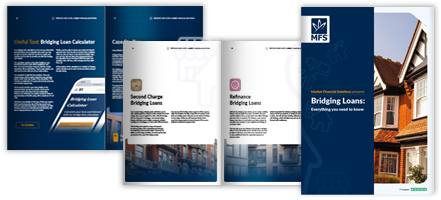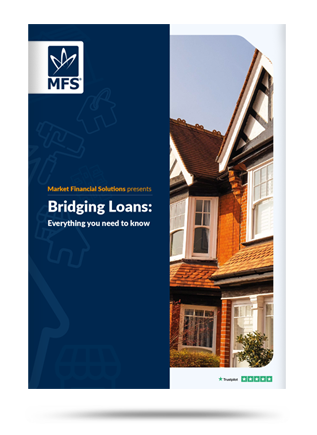
Written by Scott Lord
Deputy Chief Mortgage & Operations Officer – Front End
Market Financial Solutions are a bridging loan and buy-to-let mortgage provider and are not legal, financial, investment or tax advisers. This document is for informational purposes only and does not, and should not be considered, to constitute legal, financial, investment or tax advice or be relied upon by any person to make a legal, financial, investment or tax decision. Therefore, Investors are encouraged to seek appropriate professional advice. The information in this content is correct at time of writing.

Bridging loans come in various shapes and sizes. They can be issued for commercial properties, auctions, and buy-to-let investments. But while there are many different types of bridging finance, all loans will fall into one of two categories. Typically, these are open & closed bridging loans.
In this blog, we’ll explore why closed bridging loans may provide a better outcome over their open counterparts, along with their general pros and cons.
Open vs closed bridging loans – what are the differences?
The differences between open-ended and close-ended loans mainly lie in the exit strategies. Both are forms of short-term finance, but open loans are issued without a defined exit strategy in place. The exit strategy, or end date, will be open-ended.
There will likely be a deadline in place for when an open loan will have to be paid back. However, the borrower does not need to know exactly how this will be covered. As an example, borrowers may plan to sell a property to cover the loan, but won’t have a confirmed buyer ready or have narrowed down a fixed date for when the sale will complete.
For closed bridging, there is a defined exit strategy in place from the outset. Here, the lender involved will know how the loan will be paid back, at what date and through what method. Often, this will involve a confirmed sale of a property, but can include other methods.
Borrowers could be on the verge of receiving inheritance money, or waiting for an investment return to hit their bank account. To get a closed loan, borrowers will usually need proof for how they’ll stick to a fixed end date. Borrowers will need to think about their financial backgrounds when thinking about what bridging route to take.
Closed bridging loans – how important is it to have an exit strategy?
Closed bridging loans are those where a defined exit strategy is in place before any funds are issued. Given this extra level of security, closed loans are likely to offer better rates than their open counterparts.
With the risk cut, lenders are likely to prefer closed loans, while applicants are more likely to be accepted. The closed loan process is also likely to be much less stressful for borrowers. Having an exit strategy in place should reduce the need for worrying about how a loan will be repaid, and the likelihood of plans falling through etc because it will have already been planned.
Both open & closed bridging loans are designed to be short-term in nature. Despite this, the time frames may feel particularly tight without an exit plan in place. Generally, investors and buyers may want to seek out open loans as they could be relatively flexible.
But, with this flexibility comes added risk. Having no clear exit strategy in place can result in longer timescales than expected. This raises costs. Lenders may offer extended agreements, but monthly arrear charges may stack up in the meantime.
The raised risks are not exclusive to the borrower either. Lenders will need to assess their own financial tolerances when they think about the differences between open-ended and close-ended loans.
Not having an exit strategy raises the likelihood of delayed repayments for lenders. Given these risks, they may be less likely to offer open loans at all. Where they do, the interest rates are likely to be high, representing the dangers involved.

Examples of exit strategies – from refinancing to inheritance
Bridging loan exit strategies can often come from the sale of the security property involved. This is usually assessed through a number of variables, such as the timing of refurbishment plans or demand in the wider market.
However, sales of other assets can also be used in an exit strategy. The sale of a secondary property (one not used as security for the loan) can also be utilised, although this may prove trickier to execute. Various other investments can also be used, so long as they’re tangible in nature. Lenders may be willing to accept a strategy involving the sale of classic cars or antiques which are agreed and have clear timeframes.
Refinancing is another common form of exit strategy. Having a sensible plan for switching over to a longer-term mortgage will reassure lenders on the investment’s strengths.
Generally, exit strategies can be supported through several sources of capital and finance. Borrower’s may be able to utilise inheritance money, so long as there’s plenty of paperwork along the way. Lenders will want to see Wills, probate documents and the like. The same could be true of share sales.
Where does Market Financial Solutions stand?
At Market Financial Solutions, we only lend where an exit strategy is in place, protecting us and borrowers alike. However, this doesn’t mean there is no flexibility involved.
While an exit strategy is required from the outset, it can change as we move through the process and adapt to the client’s circumstances. We also offer a lot of flexibility in how interest is paid. We allow borrowers to roll up what’s owed or cover payments in instalments.
All our deals are handled on a case-by-case basis and are adapted to fit the needs of the client. To see how our flexibility works in practice, please have a read through our case studies. Also, check out our full list of bridging loans to see how we can help you with your specific plans.
The Complete Guide to
Bridging Loans
Everything you need to know
- Different bridging types
- Useful tools
- Apply them in real life
- Market insights & more





